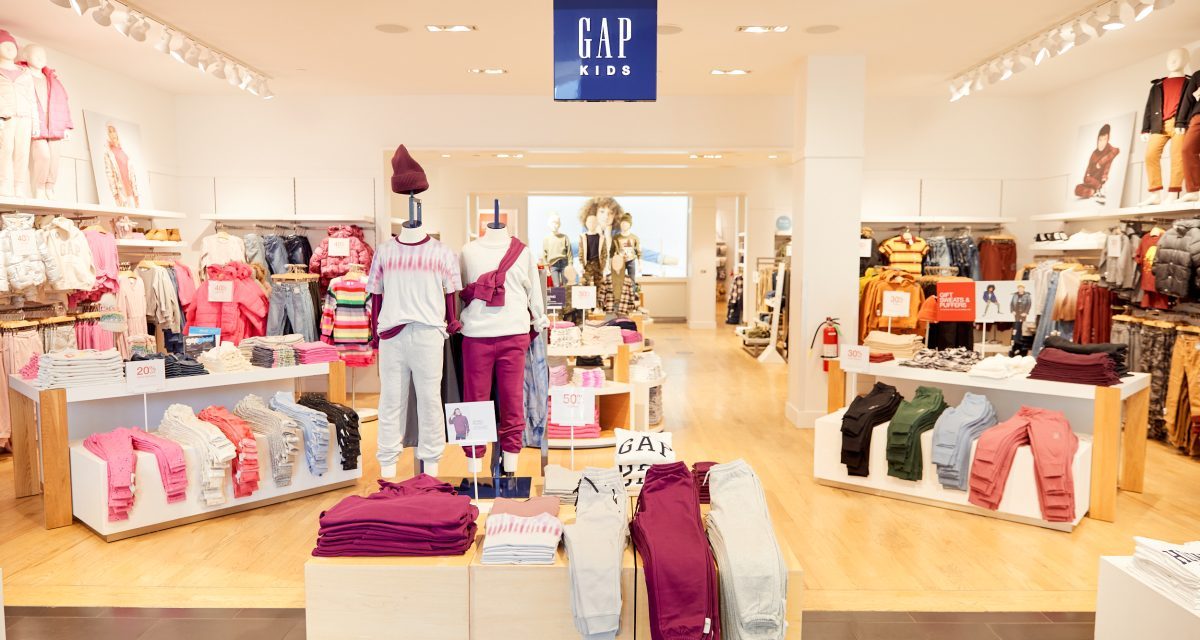Why Gap is selling on Amazon ahead of the holidays

Amid declining sales, Gap has struck a distribution deal with Amazon to boost its e-commerce growth.
The company last week announced that it will offer a selection of its collection including hoodies, t-shirts and denims online in partnership with Amazon Fashion. The launch will also feature baby products including strollers, bassinets, cribs and more under the babyGap brand.
“Collaborating with Amazon Fashion provides us a new channel to deliver Gap’s modern American essentials to even more customers in the U.S. and Canada,” Gap President and Chief Executive Mark Breitbard wrote in a press statement. “We are excited to take this step with Amazon Fashion, to expand our product offering and to deepen our connection with consumers through the Gap brand store.”
Amazon may not attract luxury fashion shoppers, but the e-commerce giant does sell the most number of clothes online. At the peak of the pandemic, Amazon sold more than 1 billion items of clothing, according to data from Jungle Scout. Despite a wider slowdown in consumer spending, one analyst told Modern Retail that Amazon’s fashion sales are still doing quite well. For Gap, opening an Amazon store could help the brand reach a lot more consumers compared to its own website.
“Gap’s sales volumes has been falling, and the brand is losing market share,” said Neil Saunders, managing director, retail at consulting firm GlobalData. “Rebuilding this through its stores and website is proving difficult. Opening store on Amazon is another route to market and, theoretically, exposes Gap to a lot more shoppers as Amazon has a lot of traffic to the fashion part of its site. Gap will be hoping for a sales boost from Amazon,” he added.
In the second-quarter, Gap reported that its overall online sales declined 6% while Gap in-store sales declined 10% to $881 million, compared to a year ago period. The company said that the Gap sales decrease was a result of imbalances in the category mix during the quarter. The decrease in net sales was also driven by strategic store closures, the company said. In addition, the Gap business was hurt by inflationary pressures impacting spending from lower-income consumers.
“To be fair, Gap had some very strong increases in online penetration during the pandemic so some of this is about giving those gains back as more people revert to store shopping. However, Gap is underperforming the overall online market and it is losing digital market share,” explained Saunders. Overall online sales at Gap including for lifestyle brands Old Navy, Banana Republic and Athleta declined 17% for the first-quarter this year.
Meanwhile, Amazon has been doubling down on growing its fashion business. Apparel was listed among one of the best-selling categories on Amazon’s recently concluded second Prime Day in October. In March, Grammy award winning artist H.E.R. launched her limited loungewear collection on Amazon. In April, Victoria’s Secret launched a wide range of its beauty products on Amazon for fast and free delivery for Prime members. This summer Amazon Fashion also introduced a new Virtual Try-On for Shoes feature to help shoppers try on sneaker styles from brands like New Balance, Adidas and Puma.
“Amazon’s fashion sales are performing reasonably well, although momentum has slowed of late as the consumer economy has tightened and people have cut back on the amount of clothing they buy,” Saunders pointed out. “The biggest problem for fashion is that Amazon’s offer is still quite disjointed and confusing and there is a lot of product to look through – this puts some people off shopping the site,” he added.
Even as Amazon faces a challenging future as the holidays draw near, it is important for the company to succeed in areas like fashion, said Saunders. “The business is already very sizable, and Amazon is one of the biggest retailers of apparel in the U.S. However, a lot of this is driven by the company’s reach and breadth of range. There is a big opportunity to deepen share of wallet and spend among existing shoppers and make the fashion offer more of a destination,” added Saunders.
Ultimately, Saunders said, Gap, which has had a “torrid year” so far, can only benefit from a branded Amazon store if it addresses the larger problem of lack of novelty and inventiveness in its existing lineup. “The wider issue here is the same as it has always been, namely that there is not enough newness or innovation in the [Gap] range,” he added.

